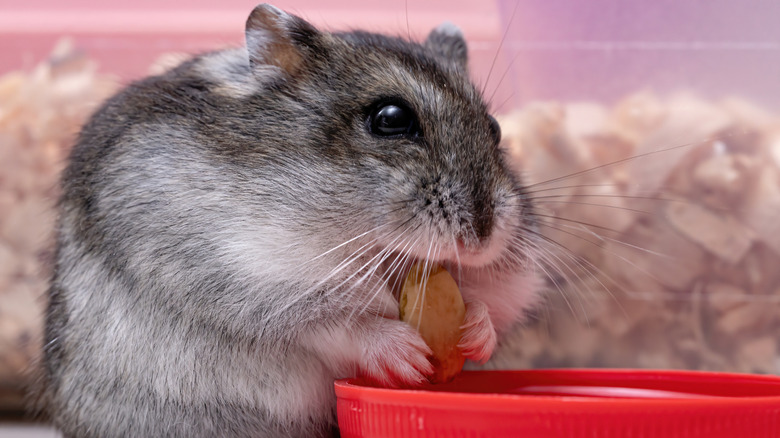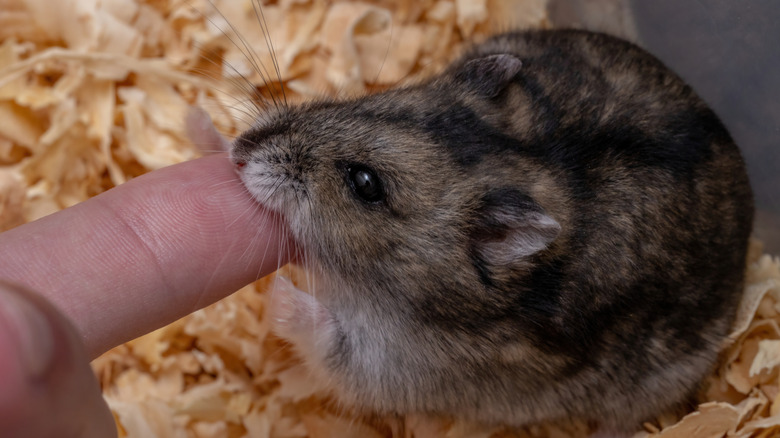A Cute And Popular Hamster Breed Is Also Known For Biting
In the world of hamsters, the most popular hamster breed remains the Syrian, more affectionately known as the "teddy bear" or "golden hamster." However, rodent enthusiasts have found favor with various breeds for their unique traits and personalities. One popular option is the Campbell's Russian dwarf hamster. This rodent — named after W.C Campbell, who found it back in 1902 — is appreciated by owners for its higher chances of cohabitating with the same sex compared to the Syrian, which prefers to live alone. Thanks to their six primary color varieties (and many variations within), Campbell's Russian dwarf hamsters have become a favorite among enthusiasts.
While Campbell's Russian dwarf hamsters can become more affectionate and show they like you with time, this relationship does not come naturally. The little furry friend needs time to adapt to their new family and setting. If you move too quickly, you may get bitten. There are several reasons hamsters bite, including fear, stress, encountering an unfamiliar scent, biting when they smell food on their owner's hands, and the desire to be alone. Yet, several other factors can lead to biting even after becoming familiar with handling and interaction.
Why hamsters bite and how to stop it
Hamsters are known to nip when stressed, so pet parents should be aware of these issues that may cause their Campbell's Russian dwarf to bite. Everyday stressors include loud noises or sudden movement, environmental changes or inadequacies, boredom, lack of sleep, and lack of a balanced diet or foods hamsters can eat. There are other reasons for biting, including handling during a nocturnal pet's most active time of day (early morning) and the annual pseudopregnancy found in females that can make them aggressive. Considering these elements and ruling out health issues causing stress, like hamster mites, a pet's unfamiliarity with its owner is the likely reason behind the dwarf hamster biting.
Harper Adams University shows how you can safely handle your little fluffball to help avoid bites and keep your pet safe. When teaching them not to bite, it's best to follow a five-week plan and be patient with the process. Week one will have an owner sitting with their pet, getting them used to their presence. Once they're comfortable, get them used to smelling and touching their owner's hand. In week three, owners will focus on giving them treats. After that, the next week is about petting them. The final step will involve picking them up and handling them. For a hamster that nips as much as Campbell's Russian dwarf, these steps can be beneficial in curbing negative interactions. With time, you can make sure your hamster and you can interact safely.

